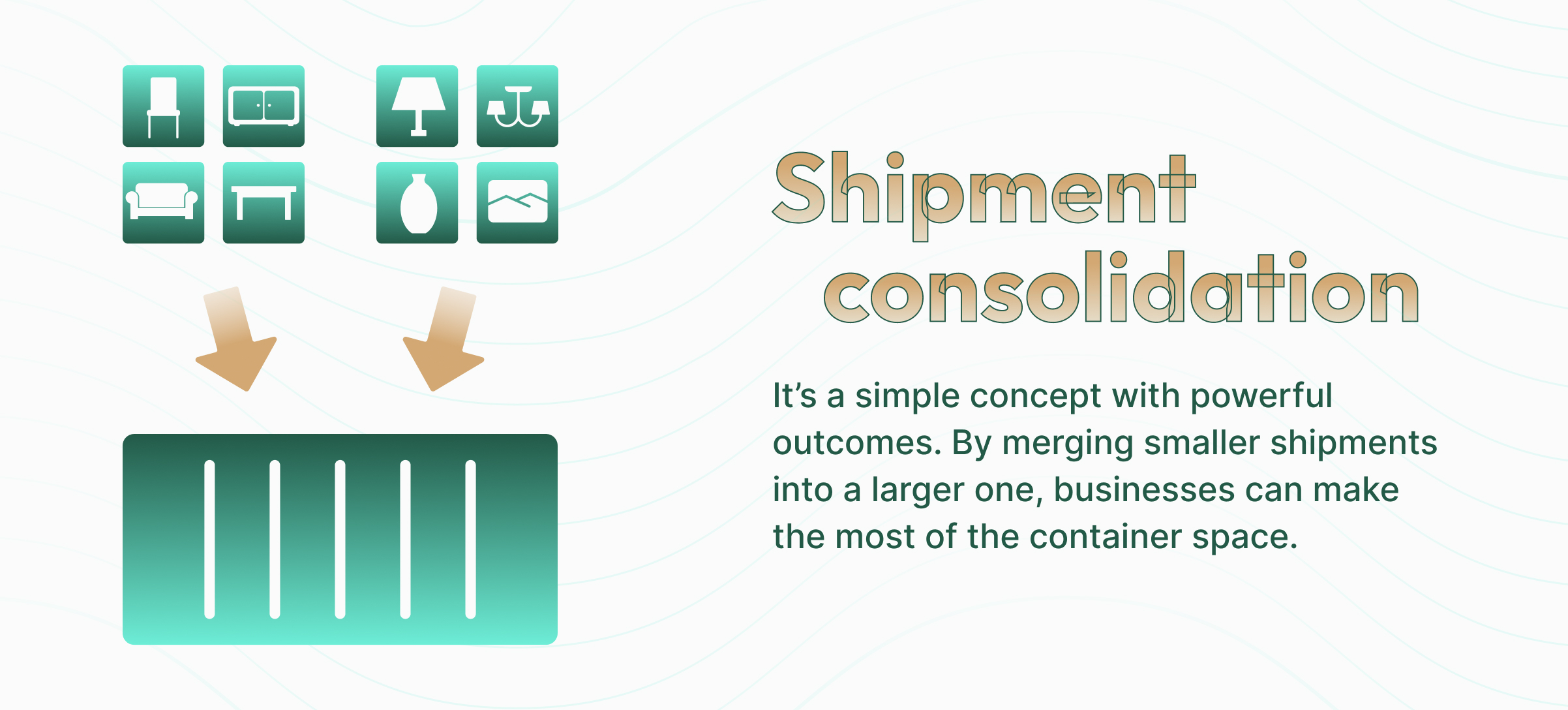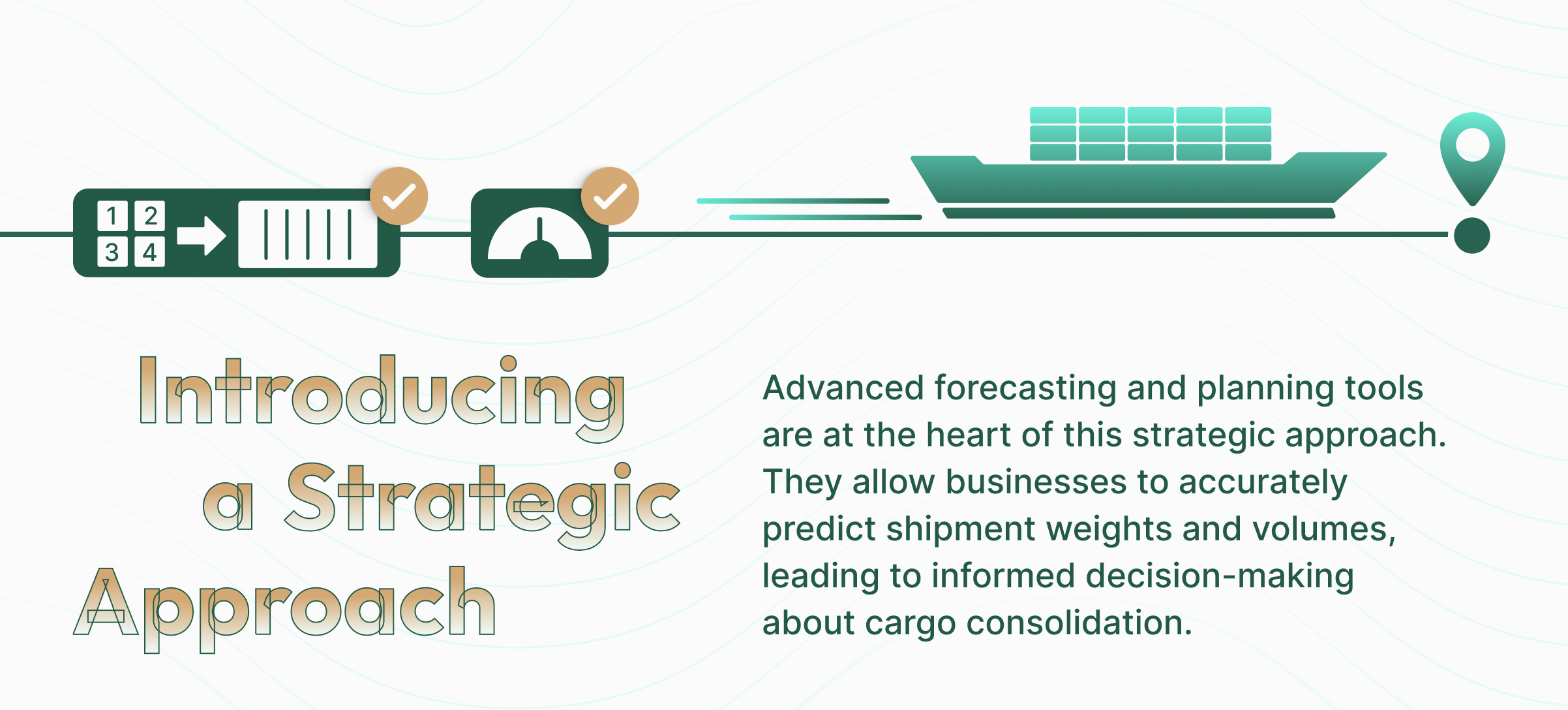Maximizing Efficiency in High-Volume Shipping: The Case for Cargo Consolidation

The global market is constantly evolving, with new players entering in and dropping out by the day. High-volume shipping forms the backbone of this complex ecosystem of commerce, with numerous businesses striving to stay ahead in the market. However, a common oversight among these businesses, primarily SMEs, is the tendency to ship smaller volumes independently rather than opting for cargo consolidation. This often overlooked aspect leads to diminished container utilization and schedules marked by unpredictability, which causes further difficulties and inefficiencies downstream.
This initial oversight, seemingly minor, has far-reaching implications. It's not just about filling up containers; it's about optimizing the entire shipping process for cost-effectiveness, time efficiency, and environmental sustainability.
Understanding the Problem
The core issue at hand with high-volume shipping sans consolidation is akin to a puzzle with pieces not fitting quite right. It's about underutilizing what you have – the container space.
This fragmented approach doesn’t just hit the pocket; it also disrupts the delicate balance of logistical precision. The result? A cascade of inefficiencies that ripple through the entire supply chain. And let's not forget the environmental angle. In today's world, where carbon efficiency isn't just a buzzword but a global imperative, traditional shipping methods without consolidation are missed opportunities for a greener footprint.
By not consolidating, businesses are leaving money on the table while also contributing to a larger carbon footprint – a double whammy of inefficiency and environmental impact.
The Power of Consolidation

Shipment consolidation is a simple concept with powerful outcomes. By merging smaller shipments into a larger one, businesses can make the most of the container space. Returning to the jigsaw puzzle, every piece fits perfectly, leaving us with a completed picture or, in this case, a fully efficient shipping process.
This strategic move is not just about packing more into a container. It's about redefining efficiency. Consolidation reduces the number of trips needed, which in turn cuts down on shipping costs and enhances schedule reliability.
However, the benefits of consolidation extend beyond margins. It's a step towards a more sustainable shipping practice. Fewer trips mean lower carbon emissions, aligning business practices with the growing global emphasis on environmental responsibility. In essence, cargo consolidation is a win-win: it's good for business and good for the planet.
Introducing a Strategic Approach
After understanding the power of consolidation, it becomes clear that achieving it is not just about intent but also about having the right tools and strategies in place. This is where technology steps in as a game-changer.

Advanced forecasting and planning tools are at the heart of this strategic approach. They allow businesses to accurately predict shipment weights and volumes, leading to informed decision-making about cargo consolidation. This not only maximizes container utilization but also streamlines the entire shipping process. The result? An efficient, cost-effective, and reliable shipping operation that moves like a well-oiled machine.
A Tale of Transformation: The Story of Edge Fashion

Picture the case of Edge Fashion, an apparel company that prides itself on being current with the latest clothing trends. Edge needs to keep up with the ever-changing tastes of its customers and relies on quick turnaround times and multiple weekly shipments.
Still a relatively new company, Edge Fashion was struggling to control shipping costs, taking a continuous hit to its profit margins due to inflated transportation costs. Moreover, their environmental impact was becoming a growing concern, particularly in an industry increasingly scrutinized for its carbon footprint.
The Breakthrough with Silq's Unique Solution:
Faced with these challenges, Edge Fashion turned to Silq’s Consolidation Planning Module. This innovative tool transformed their approach to shipping. By harnessing the power of advanced forecasting, Edge could now accurately predict shipment weights and volumes. This foresight enabled them to strategically plan and execute consolidations, ensuring containers were optimally filled.
The Resolution:
The impact was immediate and profound. Edge Fashion not only saw up to 25% cost savings due to consolidation efficiency, but they also achieved a newfound predictability in their shipping schedules. With weekly scheduled consolidations, they could better align their logistics with the fast-moving trends of the fashion world. Furthermore, the carbon-efficient shipping practices fostered by this approach resonated well with their eco-conscious customer base. Edge Fashion had not only streamlined its operations but had also taken a significant step towards sustainability, setting a new standard in the industry.
The Silq Solution
In the journey towards maximizing shipping efficiency, the role of Silq’s Consolidation Planning Module emerges as a pivotal solution. For businesses grappling with the complexities of high-volume shipping, this tool represents a beacon of innovation and efficiency.
Silq’s solution addresses the core challenges head-on. By leveraging the power of advanced forecasting, businesses can accurately predict shipment weights and volumes. This crucial insight allows for strategic planning and execution of consolidations, leading to significantly higher container utilization.

The benefits of implementing Silq's Consolidation Planning Module are twofold: Firstly, businesses can experience up to 25% in cost savings, a direct result of consolidation efficiency. Secondly, the predictability of shipping schedules is greatly enhanced, thanks to weekly scheduled consolidations. This reliability is invaluable in maintaining a smooth and efficient supply chain.
Ready to bring your supply chain to the next level? Click here to learn more.
Cargo consolidation involves combining multiple shipments from different sources into a single container to optimize costs and reduce transit times.
By sharing container space, shippers pay for only the volume they use, reducing overall shipping expenses.
E-commerce, retail, consumer goods, and manufacturing sectors gain cost and efficiency advantages from consolidated shipping.
Silq offers on-site inspections, real-time tracking, adaptable sailing schedules, custom workflows, and data-driven consolidation strategies to streamline shipping operations.
Challenges include coordination issues, delays in container loading, and mismanagement of shipments, which Silq’s tech-enabled platform helps prevent.
Ready for Supply Chain Predictability?
Importers using Silq ship smarter, safer, and with total control.







